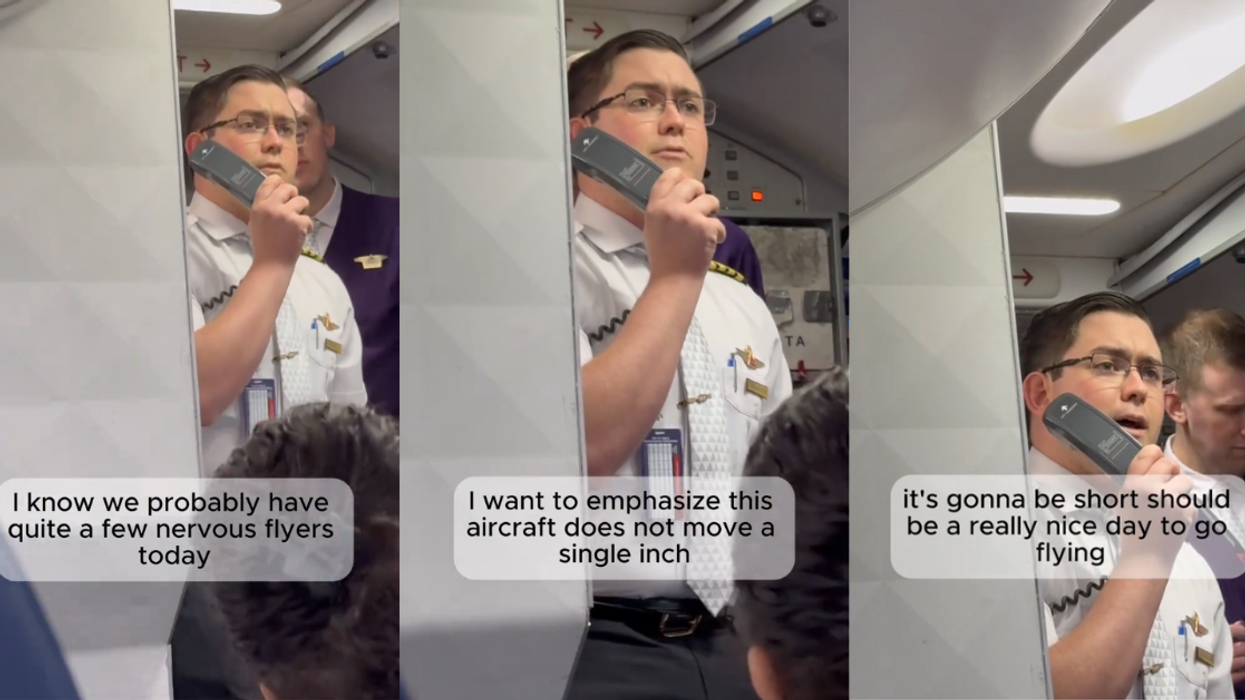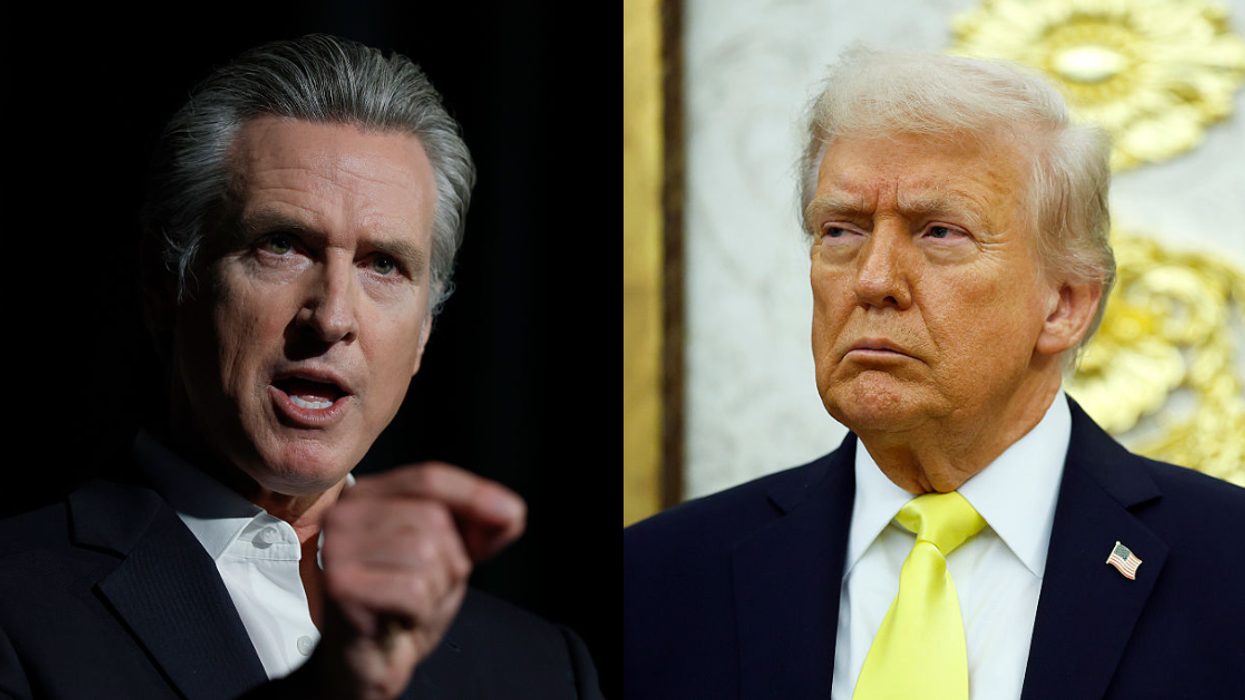Last week, President Donald Trump claimed that the "crisis" at our nation's border is so catastrophic that "We will build a Human Wall if necessary."
It looks like some of the president's supporters have taken that tweet rather literally, according to reports that a group, donning "Make America Great Again" hats, gathered to form a human “wall” along a section of the U.S.-Mexico border in Sunland Park, New Mexico, just northwest of El Paso, Texas.
Pictures from the demonstration soon made the rounds online.
As did video footage:
Though it appears the "tremendous numbers" of immigrants streaming through the southern border had a previous engagement, those who participated in blocking them were swiftly criticized.
The president's claims of a "crisis" at the border are overblown.
Trump during his State of the Union address stressed the need for a border wall and announced that he had ordered 3,750 troops to prepare for what he referred to as a “tremendous onslaught."
The president further claimed that “No issue better illustrates the divide between America’s working-class and America’s political class than illegal immigration” and that “working-class Americans are left to pay the price for mass illegal immigration.”
In fact, the number of arrests by the Border Patrol is the lowest since the early 1970s, even as the number of agents has more than doubled.
Border Patrol made over 1.6 million arrests in 2000. At the time, there were just 9,600 agents nationwide. As the government has devoted more time and resources to staffing, surveillance technology, and fencing, that number has dropped steeply. 19,000 Border Patrol agents made 310,000 arrests during the last fiscal year.
Last week, the City Council in Nogales, a small Arizona border city, passed a resolution threatening to sue the federal government should it fail to remove all concertina wire installed within the city limits.
The council’s resolution says the barbed wire on the border wall, which runs through the downtown area, “is only found in a war, prison or battle setting” and would harm or kill any person or animal that might attempt to scale it.
The council’s resolution says placing concertina wire along the wall is “not only irresponsible but inhuman.”
The wire was installed by soldiers deployed by the Pentagon who have installed concertina wire at or near several official crossings. In November, U.S. Customs and Border Protection said the military had sent 36 miles of concertina wire to be used at or near official crossings in Arizona, California, and Texas.
Despite the pushback, the president has continued to mount calls for more border security. Speaking at a rally in El Paso, Texas, he repeated a false claim about crime in the city in an attempt to drive up support for the border wall.
"I’ve been hearing a lot of things: ‘Oh the wall didn’t make that much of a difference.’ You know where it made a big difference? Right here in El Paso," he said.
This claim has been widely debunked after Trump claimed during his State of the Union address that El Paso transformed from “one of the most dangerous cities” into one of the safest cities in the United States after the construction of barriers at the border.
"El Paso was never one of the most dangerous cities in the country," writes New York Times fact checker Linda Qiu, noting that the city "has had a consistently lower crime rate than the average among more than 20 similarly sized cities, according to data from the Federal Bureau of Investigation."
"In that group, El Paso reported the second-lowest violent crime rate in 2008 — before the construction of border fencing," she notes. "And after the barrier was completed, it held the rank while the violent crime rate did not change considerably."








 The Bulwark
The Bulwark Truth Search AI
Truth Search AI





 @adamscochran/X
@adamscochran/X


 @
@ @albiefb/Instagram
@albiefb/Instagram @mold3.2/Instagram
@mold3.2/Instagram @valeorrca10/Instagram
@valeorrca10/Instagram @tr2119/Instagram
@tr2119/Instagram @daysha_hinojosa/Instagram
@daysha_hinojosa/Instagram @empowhersisterhood/Instagram
@empowhersisterhood/Instagram @mulholland_drive_by/Instagram
@mulholland_drive_by/Instagram @diorsb3lla/Instagram
@diorsb3lla/Instagram @touchofgray5/Instagram
@touchofgray5/Instagram @chelyjauregui10/Instagram
@chelyjauregui10/Instagram @americaneagle/Instagram
@americaneagle/Instagram